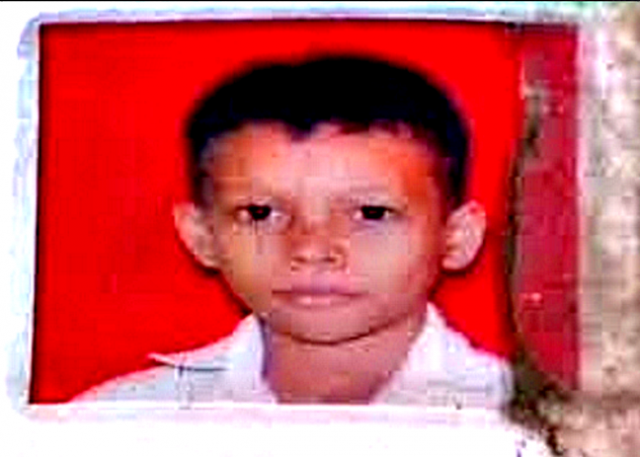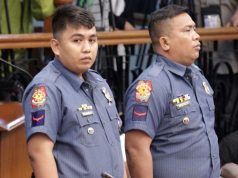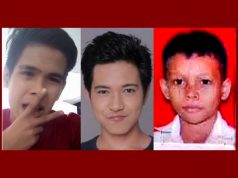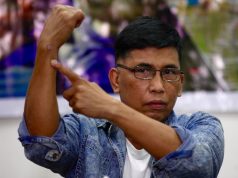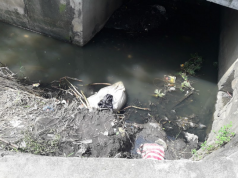MANILA, Philippines — Nearly four weeks after a boy’s body was found in a creek in Gapan, Nueva Ecija, the Public Attorney’s Office (PAO) and the Philippine National Police (PNP) continue to argue on whether the cadaver belongs to Reynaldo “Kulot” De Guzman, believed to have been killed for his knowledge on the police killing of student Carl Angelo Arnaiz in Caloocan. PAO and the PNO are also arguing over whether the body fished out in Gapan was circumcised or not.
At the resumption of the Senate Committee on Public Order and Dangerous Drugs’ hearing, PAO chief Persida Acosta maintained that the recovered body indeed belonged to De Guzman and that body was circumcised, contrary to the PNP’s DNA findings.
“Si Kulot po talaga, sa mukha pa lang. Bukod po sa kulugo sa left at ‘yong peklat dito, ‘yan po, nakita po ng tatay, nanay doon [It’s really Kulot based on the face alone. Aside from the wart on the left and the scar here, his father and mother identified him],” Acosta said while showing a picture of the cadaver’s face before the senators.
“Nagtataka nga ako may nagpakalat na hindi tuli ang bangkay, eh tuli naman ang bangkay. Buti na lang may asawa na ako, kaya alam ko ang tuli at hindi tuli [I am wondering why there are those spreading the word that the cadaver was not circumcised. It’s good that I already have a husband and I can tell whether someone’s already circumcised or not],” she added.
However, Police Chief Inspector Reynaldo Dave Jr., the medico-legal officer of the PNP’s Crime Laboratory in Region 3, maintained that the body found in Nueva Ecija had a genitalia whose foreskin was not yet removed.
“I have pictures to show that the alleged Reynaldo de Guzman which I examined together with the NBI (National Bureau of Investigation) is uncircumcised,” he said.
Dave also pointed out that Kulot’s father, Eduardo Gabriel, did not find the scar on the left side of the neck of the cadaver when he claimed last Sept. 6 that it belonged to his son.
“When the parents arrived, the father immediately looked for supposed signs of identification, which is the wart and the scar on the left side of the neck. The wart is present, but the father claimed that the scar on the neck is already absent. He’s the one who told us that,” he said.
Gabriel, however, insisted during the Senate hearing that the body was indeed his son Kulot.
“Lahat po ng palatandaan nandoon po sa katawan niya po [All of the identifying marks were found in his body],” he told senators.
Meanwhile, Acosta also questioned the PNP’s DNA testing of the cadaver, saying it was carried out without consent.
According to Senior Superintendent Ligaya Sim, PNP Crime Laboratory deputy director for administration, authorities were able to secure a letter of consent from De Guzman’s parents.
Sim stood by the PNP’s DNA test results, saying the findings carried more weight than the body’s identifying marks.
“Yong sinasabi po namin, ang DNA po ang [What we’re saying is that the DNA is a] primary identifier…Ngayon po ang sinasabi nila, [Now, what they are saying is the] secondary identifier. Kapag sinabi na kulugo, iba po ang DNA, primary identifier po ‘yon [If they said there was a wart, the DNA is different. It’s a primary identifier],” she said.
The PNP is open to conduct another DNA testing by a separate institution amid doubts on its findings, according to Sim.
PNP Criminal Investigation and Detection Group (CIDG) Director Roel Obusan, meanwhile, said that “as far as we are concerned, we are still in a dilemma whether to accept kung talagang patay na talaga si Kulot o hindi [if Kulot is dead or not] because of the issue of identification and on the DNA.”
He said the police had continued its investigation into the identity of the body found in Nueva Ecija.
Meanwhile, Sen. Panfilo “Ping” Lacson, chairman of the Senate panel, said it was up to the courts to determine the credibility of the PAO and the PNP’s findings.
“Leave it to the courts to decide later on,” said Lacson.

